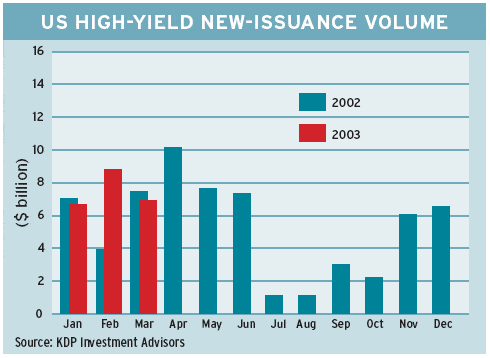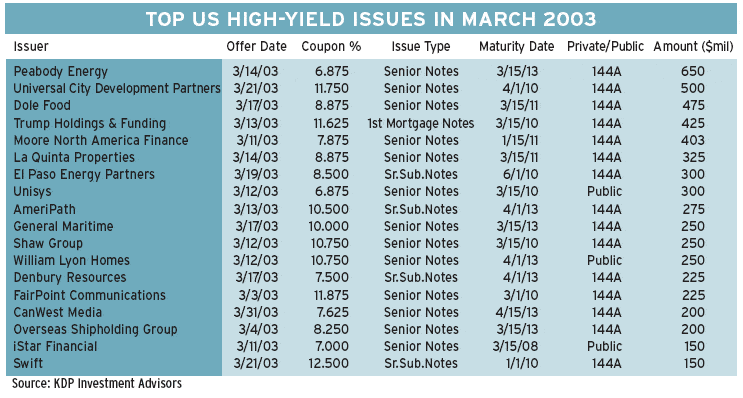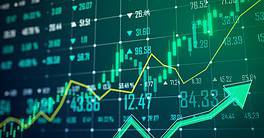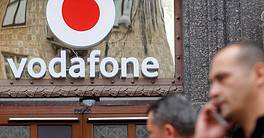THE AMERICAS

Mutual funds that invest in high-yield bonds returned 5.4% on average in the first quarter of 2003, continuing a winning streak that began late last year, according to New Yorkbased Standard & Poors.
Junk bonds have been helped by low interest rates, which make their yields look more attractive compared to other fixed-income investments, says Joel Friedman, director at S&P.;
Helping the cause is that investors gained confidence in high-yield bonds as default rates for the securities stabilized or declined in recent months, he says.
The 12-month rolling average default rate for US high-yield issuers declined to 6.9% in March 2003 from 10.2% in April 2002, S&P; data show.
While the war in Iraq and the political tensions that preceded it hurt the equity market in the first quarter, the effect on the high-yield bond market was virtually unnoticeable, Friedman says.This doesnt mean that highyield bond funds are immune to volatility, he says.Should interest rates begin to creep back up, or domestic stocks begin to rebound, the market could see some price pressure on a lot of the high-flying funds, Friedman says.
Investors poured $8.6 billion into high-yield bond funds in the first quarter of this year, including $3.9 billion in March alone, according to Arcata, California-based AMG Data Services.
All 354 high-yield bond funds tracked by S&P; ended the first three months of 2003 with gains.
In aggregate, the credit picture has become unexpectedly good, says Kenneth Hackel, chief US fixed-income strategist at Merrill Lynch in New York.

As we look back on the past three years, one of the most tumultuous periods in the credit markets history, it is astounding how quickly many of the problems of the period have been remedied, Hackel says.
Corporate bonds kept on rolling through the first three months of 2003, after finishing a rollercoaster year in 2002 with an exceptionally strong fourth quarter, he adds. Large cash positions in the hands of insurance companies, traditionally the largest buyers of corporate bonds, have kept demand quite strong, Hackel says.
Meanwhile, new-issuance activity has remained brisk. Corporate bond issuance tends to follow a seasonal pattern, says Wei Wang, analyst at Citigroup Global Markets in New York. Bond issuance follows the nations holiday and vacation schedule, with a bias toward more issuance in the first half, according to data for the past 16 years, he says.
Either the issuance calendar is even more frontloaded that usual this year, or corporate supply may exceed our forecast of $450 billion for the year,Wang says.This years strong newissuance has been driven in part by historically low interest rates, he says.
The surging appearance of small and infrequent borrowers in the market this year was unexpected, according to Wang, but investors looking to diversify welcomed the new names.
Gordon Platt



